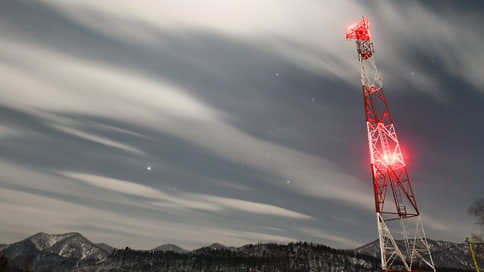LNR and DNR will become the subject of competition – Kommersant
[ad_1]

As it became known to Kommersant, the structures of the Crimean Miranda-Media and K-Telecom, already operating in the Kherson and Zaporozhye regions, will receive frequencies in the DPR and OSR. But the dominant position should be taken by Miranda Media, which the authorities plan to endow with the functions of a single operator. On its basis, the sharing of base stations will be organized due to their shortage, experts say. Operators are already looking for employees to work in the DPR and LPR, who are required to understand the principles of channel lease.
On April 19, the participants of the conciliation meeting of the State Commission on Radio Frequencies (SCRF) approved the allocation of frequencies for cellular communications in the DPR and LPR to K-Telecom operators (operating in Crimea under the Win mobile brand, in Kherson and Zaporozhye regions under the +7Telecom brand) and Mirtelecom (a structure of the Crimean operator Miranda-Media, 19.99% of which is owned by Rostelecom), a Kommersant source familiar with the decision said. According to him, the decision is planned to be approved at the meeting of the State Committee for Radio Frequencies on April 24. We are talking about amending the decision of December 2022, which initially allocated frequencies in the regions.
The plans of the Crimean operators and their structures to enter the DPR and LPR became known in March, and Miranda-media should become a co-owner of a single operator in the regions (see “Kommersant” dated March 24). The Ministry of Digital Development confirmed to Kommersant that the State Committee for Radio Frequencies will consider the issue of allocating frequencies to operators “who are ready to work in new regions, their names will be published in the minutes of the meeting.” The operators did not respond to Kommersant’s requests.
Now frequencies in the DPR and LPR are distributed only between operators that worked on their territory until October 2022: Phoenix (Republican Telecom Operator) and Mobile Communications Systems (ISS; until July 2022 – Lugacom). It is assumed that Miranda Media will consolidate the assets of these companies, gaining control in a joint venture with each of them. For Phoenix, the Russian authorities also assigned frequencies in the Kherson and Zaporozhye regions.
Operators that can receive frequencies in the DPR and LPR have been looking for specialists for vacancies in the region since the end of March, follows from the ads on hh.ru. Thus, Miranda-Media selects personnel for work in Donetsk and Luhansk: applicants who will have to negotiate with the “first persons of regional operators” are required to understand the principles of channel lease and traffic transmission. IC Service, the manager of K-Telecom, is looking for a technical director whose area of responsibility will include the DPR and LPR, as well as line employees (engineers, accountants, clerks) in Donetsk and Lugansk. IC Service told Kommersant that they “know nothing” about vacancies.
The entry of new operators in the DPR and LPR in the future may lead to cheaper tariffs and an increase in the number of base stations in the territory, says Denis Kuskov, CEO of TelecomDaily. Now they are not enough, and hostilities create a risk that the existing infrastructure may fail, the expert emphasizes. “In Russia as a whole, telecom operators are not used to sharing infrastructure. But until the problem is solved with the release of a sufficient number of new base stations, the sharing of resources will continue,” he says.
Operators entering the DPR will lease part of the base stations from Phoenix, in which Miranda Media will receive a share, as well as use the capacities of other existing players, “the main intrigue concerns the division of frequencies that are still assigned to Phoenix,” says General Director of the company “Ordercom” Dmitry Galushko.
For operators intending to enter the region, it would be logical to reduce the regulatory burden, says Alexei Rabin, an NTI expert on artificial intelligence and telecommunications. He compares the situation in the DPR and LPR with the situation in Russia in the late 1990s: “At that time, dozens of small operators in certain regions were able to provide the country with cellular communications relatively quickly. In many respects, this was done due to the absence of excessive bureaucratic restrictions.”
[ad_2]
Source link





